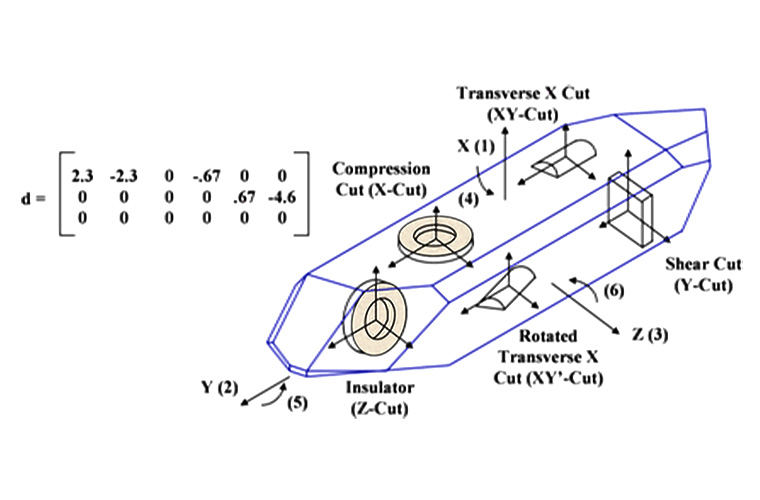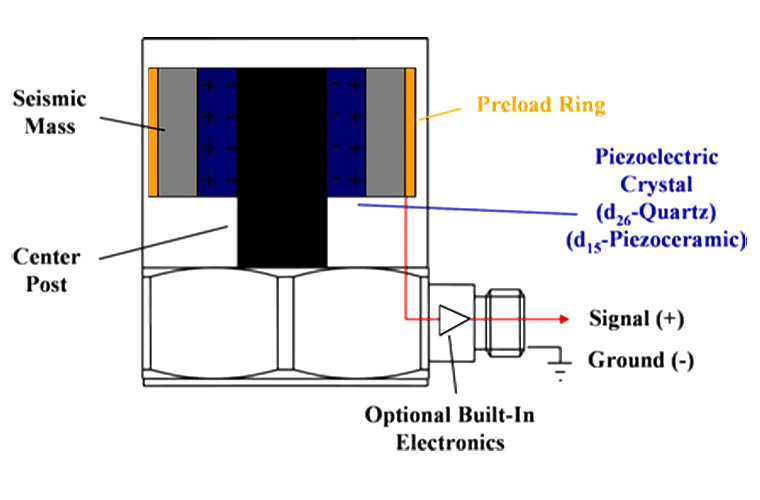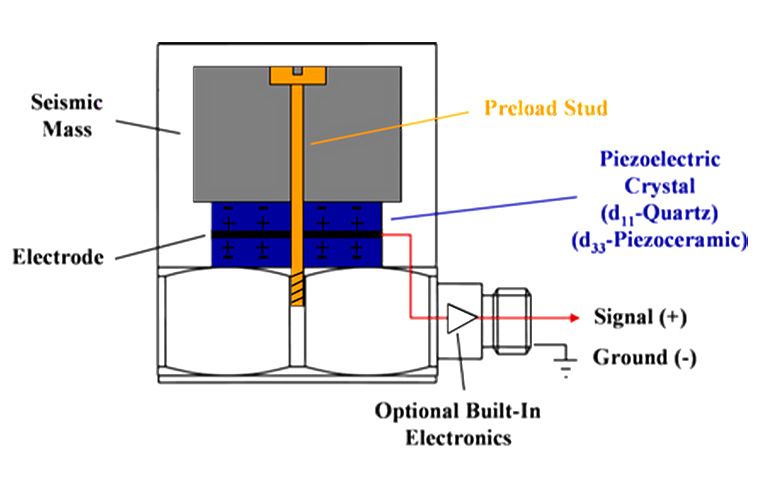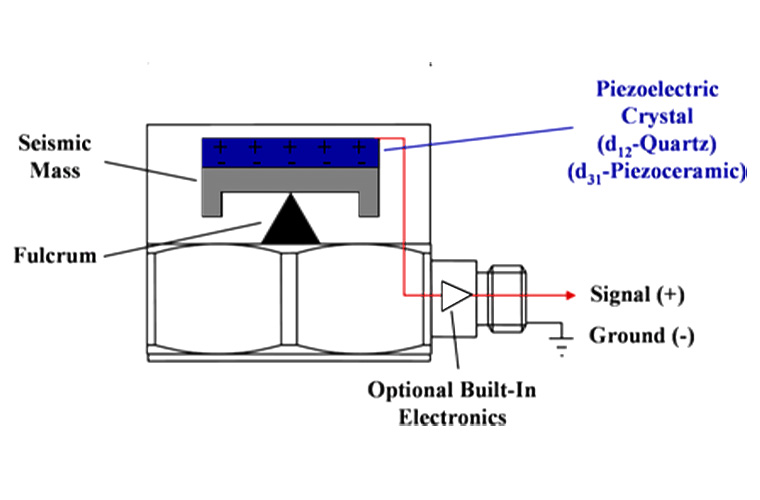Main Menu
- Home
- Product Finder
- Calibration Systems
- Calibration Services
- Digital Sensing
- Industrial Vibration Calibration
- Modal and Vibration Testing
- Non-Destructive Testing
- Sound & Vibration Rental Program
- Learn
- About Us
- Contact Us
In previous articles, we've discussed the the basic function and structure of piezoelectric accelerometers and saw that the output of an ideal performing accelerometer is “straight-line” behavior. This means a flat frequency response in terms of amplitude and phase, as well as amplitude linearity. Here, we review common designs for a piezoelectric accelerometer’s internal sensing element construction. Both the piezoelectric material (quartz or ceramic) and geometry (Shear, Compression, Inverted Compression or Flexure Beam) are discussed. These designs are applicable whether the accelerometer is ICP® or charge mode operation. More detailed information on the structure of accelerometers can be found on the PCB web site under the technical reference section.
The choice between quartz and ceramic for use as the piezoelectric material is often driven by tradeoffs in manufacturing flexibility, geometry and long term stability. Quartz has the inherent benefit of the best long term output stability (naturally piezoelectric) with no pyroelectric output. Compared with ceramics, quartz has lower charge output, but high open circuit voltage sensitivity. Additionally, quartz crystals can only be cut in certain geometries (see figure), limiting the possible design geometries of the sensing element. Ceramics, on the other hand, can be machined, or molded, into a variety of geometries such as plates, beams and annular rings, which are then poled after shaping to produce the piezo electric effect. This advantage provides the most design flexibility to meet a variety of packaging requirements. Ceramics also have a very high charge output compatible with low-noise internal microelectronic charge amplification designs. Some special ceramics can be operated to high temperatures up to 900 deg F. Unfortunately, ceramics are pyroelectric with a relatively high temperature coefficient compared to quartz.

Today, the most common internal construction for piezoelectric accelerometer construction is shear mode. Shear designs can be fashioned in configurations such as: tri-shear, planar shear and annular shear. Fundamentally, the shear mode designs have significant benefits over original compression designs in that the crystal sensing element is better isolated from base strain inputs and thermal transients by mounting the crystal on an internal post. Shear designs also typically exhibit lower transverse sensitivity and base strain sensitivity, and have better thermal stability.

The original compression designs for accelerometers combined an X cut (see figure below, ref D11) quartz crystal (or ceramic element) preloaded with a seismic mass. The benefits of the simple, reliable design were good sensitivity and a high natural frequency providing a broad useable frequency range. Drawbacks to the design included sensitivity to base strain effects and a thermal transient sensitivity also manifested through strain effects. With a slight modification to the original compression mode, the inverted compression mode design evolved in order to improve these limitations. Essentially, the inverted compression design “hangs” the compression mode sensing element from the top of the accelerometer package. This design eliminates much of these undesirable strain effects on the sensing element. Older back-to-back reference accelerometers employed this design for calibration applications, with its top surface flat and threaded to accept an accelerometer mounted directly to it. Even for this application, shear mode designs have replaced compression and inverted compression designs and are being implemented as current accelerometer design technology in most cases. For these reasons, both of these compression mode designs have essentially become obsolete.

Flexure beam is another geometric variation of sensing element structure. While it has one of the highest outputs for low profile, low cost and lightweight designs, it is less used due to challenges with shock survivability and thermal transients. In applications where extremely low profile elements prevail, some flexure beam designs are still the only available solution.

In summary, most modern day accelerometers are constructed from a shear structured design. The flexibility of creating different geometries of ceramic crystals has driven an array of application specific sensor designs such as: low cost annual shear based accelerometers for modal arrays, to precision tri-shear general purpose accelerometers to miniature accelerometers to extreme high temperature applications like environments up to 900 deg F. Shear structured accelerometer designs exhibit high sensitivity/resolution and low spurious out effects to inputs like transverse input or temperature transients for near ideal performance in laboratory and field applications. However, it can be overwhelming when choosing between the hundreds of various models so please remember that help and advice in the form of a knowledgeable application engineer is only a phone call or mouse click away...